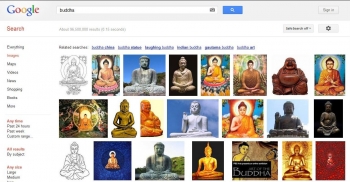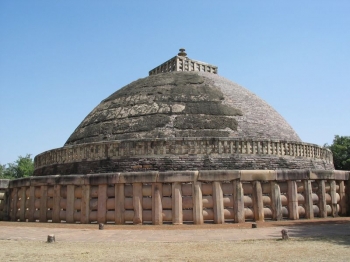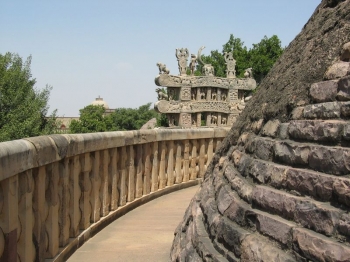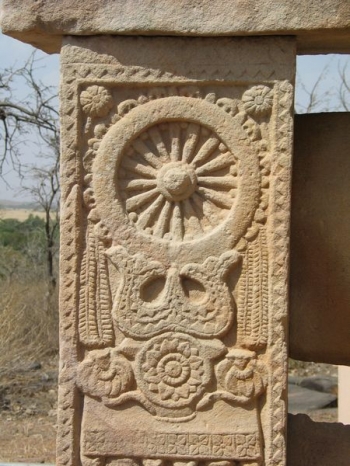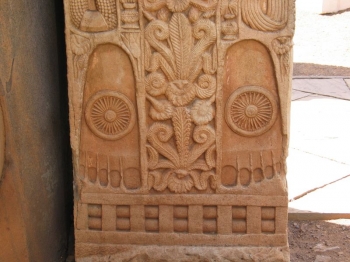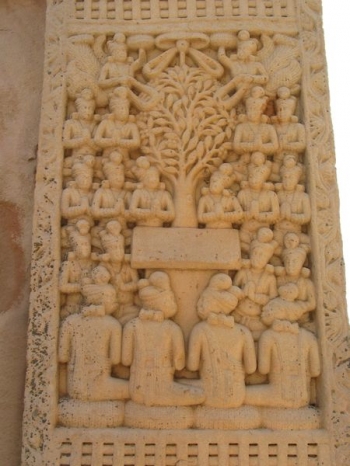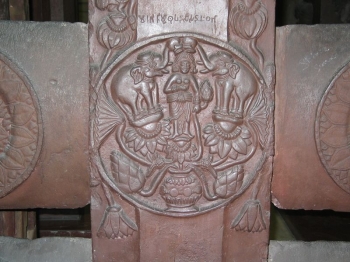Who doesn’t recognize the Buddha? His image appears these days on watches, tennis shoes, t-shirts – nearly any kind of manufactured product you might think of. There’s even a Buddha themed design for an acrylic toilet tank. A search of Google images for “Buddha” returns over 96 million hits. The most popular are perhaps the best known, the Buddha seated, his hands either in meditation posture or one hand reaching down to touch the earth (Figure 1).
It may be difficult to even think of the Buddha without this popular imagery. It may in fact be hard to imagine a time when this familiar icon did not exist. In some quarters of the Buddhist world, 2012 marked the 2600 anniversary of the Buddha’s enlightenment, so you might believe Buddha images go back at least as many years. One of the curiosities of history, though, is that the first representations of the Buddha date to the early Common era, nearly 400 years after the Buddha’s death. Before that there is no evidence OF Buddhists making images of the Buddha.
There was of course a material culture, a very rich one that resulted in the production of the earliest surviving religious monuments of both India and of Buddhism. Several dome-shaped structures known as stupas are believed to have been constructed shortly after the Buddha’s death (Figure 2). They were intended to house the master’s ashes, bones, and associated relics and functioned as centers of worship and pilgrimage. Evidence of these first stupas has not yet been found, but among the oldest extant stupas, and those most frequently studied, are those at Sanchi, Bharhut, and Amaravati. Construction on these stupas is believed to have started as early as 2nd century BCE and finished as late as 2nd century CE, a span of 400 years.
While the stupas themselves were rather plain looking, they were surrounded by elaborately decorated railings, a stone fence circling the structure and punctuated at the cardinal points by gates. The fence created a channel through which worshippers could circle the stupa, a ritual still practiced widely today. Devotees typically circumambulate in a clock-wise direction, with the sacred object on the right. The railing presented on outer boundary to the left (Figure 3) and functioned to keep worshippers enclosed within a scared space.
There is in the earliest of this work no evidence of any image of the Buddha himself. In fact the gates and railings are decorated with symbols familiar to Buddhists (Figures 4-6), such as bodhi trees, wheels, stupas, footprints, ladders, and thrones, but there is no Buddha to be seen apart from his incarnations in the Jataka tales, edifying stories of the Buddha’s many previous lives in which he struggled to perfect his compassion. Of the historical Buddha, there is not one image to be found.
This absence has been the cause for much speculation among historians. The first to examine the subject was French scholar Albert Foucher, who noted in 1917 that the period in question overlaps an important development in Indian material culture, the ability to carve in stone. As has been observed in the history of adapting new materials and media, there is an initial experimental period, the earliest phase of which is copying old forms into the new medium. The earliest forms of narrative cinema, for example, were nothing more than theatre productions documented on film. The first websites were reproductions of printed magazines or book pages.
Similarly, the first themes recorded in stone didn't just arrive. They were the aesthetic extensions of an earlier time when artisans worked with more perishable materials, such as wood. We know from inscriptions at the Sanchi stupa, for example, that one of the gates was sculpted by ivory carvers (Foucher, p. 3). If artisans had been carving the Buddha in wood or ivory, there should have been no reason for them not to carve the Buddha in the new medium of stone.
More curious still, artisans were skilled at carving humans. There are no lack of them at Sanchi, Barhut, and Amaravati. Artisans of the day also had no difficulties in representing anthropomorphized nature spirits known as yakshas and yakshinis, or in depicting the gods and goddesses, such as Laksmi (Figure 7). They even carved the Buddha as he appeared in previous incarnations. Clearly, there was no lack of technical skill in representing an anthropomorphic Buddha – if one was wanted.
The absence of the Buddha in stone, Foucher argued, was not the absence of ability, but instead the absence of the idea of representing an historical, human Buddha.
Reference
Foucher, A., Thomas, F. W., & Thomas, L. A. 1917. The beginnings of Buddhist art and other essays in Indian and Central-Asian archæology. Paris, P. Geuthner.
Figures 2-7 from the collection of Dr David Efurd, Wofford College: http://www.artstor.org/what-is-artstor/w-html/col-efurd.shtml
